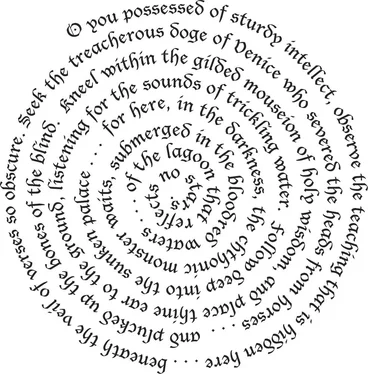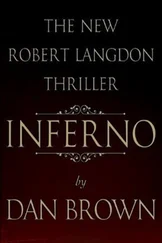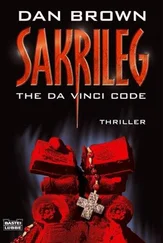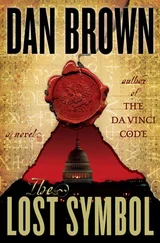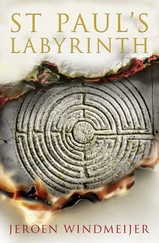Dan Brown - Inferno - A Novel
Здесь есть возможность читать онлайн «Dan Brown - Inferno - A Novel» весь текст электронной книги совершенно бесплатно (целиком полную версию без сокращений). В некоторых случаях можно слушать аудио, скачать через торрент в формате fb2 и присутствует краткое содержание. Год выпуска: 2013, ISBN: 2013, Издательство: Doubleday, Жанр: Старинная литература, на английском языке. Описание произведения, (предисловие) а так же отзывы посетителей доступны на портале библиотеки ЛибКат.
- Название:Inferno: A Novel
- Автор:
- Издательство:Doubleday
- Жанр:
- Год:2013
- ISBN:978-0-385-53786-5
- Рейтинг книги:4 / 5. Голосов: 1
-
Избранное:Добавить в избранное
- Отзывы:
-
Ваша оценка:
- 80
- 1
- 2
- 3
- 4
- 5
Inferno: A Novel: краткое содержание, описание и аннотация
Предлагаем к чтению аннотацию, описание, краткое содержание или предисловие (зависит от того, что написал сам автор книги «Inferno: A Novel»). Если вы не нашли необходимую информацию о книге — напишите в комментариях, мы постараемся отыскать её.
Inferno: A Novel — читать онлайн бесплатно полную книгу (весь текст) целиком
Ниже представлен текст книги, разбитый по страницам. Система сохранения места последней прочитанной страницы, позволяет с удобством читать онлайн бесплатно книгу «Inferno: A Novel», без необходимости каждый раз заново искать на чём Вы остановились. Поставьте закладку, и сможете в любой момент перейти на страницу, на которой закончили чтение.
Интервал:
Закладка:
Sienna glanced uneasily at the biohazard symbol on the tube.
Allusions to the plague seemed to be occurring with more frequency this morning than Langdon cared to admit, and so it was with reluctance that he acknowledged a further connection. “ Saligia is representative of the collective sins of mankind … which, according to medieval religious indoctrination—”
“Was the reason God punished the world with the Black Death,” Sienna said, completing his thought.
“Yes.” Langdon paused, momentarily losing his train of thought. He had just noticed something about the cylinder that struck him as odd. Normally, a person could peer through a cylinder seal’s hollow center, as if through a section of empty pipe, but in this case, the shaft was blocked. There’s something inserted inside this bone . The end caught the light and shimmered.
“There’s something inside,” Langdon said. “And it looks like it’s made of glass.” He flipped the cylinder upside down to check the other end, and as he did so, a tiny object rattled inside, tumbling from one end of the bone to the other, like a ball bearing in a tube.
Langdon froze, and he heard Sienna let out a soft gasp beside him.
What the hell was that?!
“Did you hear that sound?” Sienna whispered.
Langdon nodded and carefully peered into the end of the canister. “The opening appears to be blocked by … something made of metal.” The cap of a test tube, maybe?
Sienna backed away. “Does it look … broken?”
“I don’t think so.” He carefully tipped the bone again to reexamine the glass end, and the rattling sound recurred. An instant later, the glass in the cylinder did something wholly unexpected.
It began to glow.
Sienna’s eyes opened wide. “Robert, stop! Don’t move!”
CHAPTER 14
Langdon stood absolutely still, his hand in midair, holding the bone cylinder steady. Without a doubt, the glass at the end of the tube was emitting light … glowing as if the contents had suddenly awoken.
Quickly, the light inside faded back to black.
Sienna moved closer, breathing quickly. She tilted her head and studied the visible section of glass inside the bone.
“Tip it again,” she whispered. “Very slowly.”
Langdon gently turned the bone upside down. Again, a small object rattled the length of the bone and stopped.
“Once more,” she said. “Gently.”
Langdon repeated the process, and again the tube rattled. This time, the interior glass shimmered faintly, glowing again for an instant before it faded away.
“It’s got to be a test tube,” Sienna declared, “with an agitator ball.”
Langdon was familiar with the agitator balls used in spray-paint cans—submerged pellets that helped stir the paint when the can was shaken.
“It probably contains some kind of phosphorescent chemical compound,” Sienna said, “or a bioluminescent organism that glows when it’s stimulated.”
Langdon was having other ideas. While he had seen chemical glow sticks and even bioluminescent plankton that glowed when a boat churned up its habitat, he was nearly certain the cylinder in his hand contained neither of these things. He gently tipped the tube several more times, until it glowed, and then held the luminescent end over his palm. As expected, a faint reddish light appeared, projected onto his skin.
Nice to know a 208 IQ can be wrong sometimes .
“Watch this,” Langdon said, and began shaking the tube violently. The object inside rattled back and forth, faster and faster.
Sienna jumped back. “What are you doing!?”
Still shaking the tube, Langdon walked over to the light switch and flipped it off, plunging the kitchen into relative darkness. “It’s not a test tube inside,” he said, still shaking as hard as he could. “It’s a Faraday pointer.”
Langdon had once been given a similar device by one of his students—a laser pointer for lecturers who disliked wasting endless AAA batteries and didn’t mind the effort of shaking their pointer for a few seconds in order to transform their own kinetic energy into electricity on demand. When the device was agitated, a metal ball inside sailed back and forth across a series of paddles and powered a tiny generator. Apparently someone had decided to slide this particular pointer into a hollow, carved bone—an ancient skin to sheathe a modern electronic toy.
The tip of the pointer in his hand was now glowing intensely, and Langdon gave Sienna an uneasy grin. “Showtime.”
He aimed the bone-sheathed pointer at a bare space on the kitchen wall. When the wall lit up, Sienna drew a startled breath. It was Langdon, however, who physically recoiled in surprise.
The light that appeared on the wall was not a little red laser dot. It was a vivid, high-definition photograph that emanated from the tube as if from an old-fashioned slide projector.
My God! Langdon’s hand trembled slightly as he absorbed the macabre scene projected on the wall before him. No wonder I’ve been seeing images of death .
At his side, Sienna covered her mouth and took a tentative step forward, clearly entranced by what she was seeing.
The scene projected out of the carved bone was a grim oil painting of human suffering—thousands of souls undergoing wretched tortures in various levels of hell. The underworld was portrayed as a cutaway cross section of the earth into which plunged a cavernous funnel-shaped pit of unfathomable depth. This pit of hell was divided into descending terraces of increasing misery, each level populated by tormented sinners of every kind.
Langdon recognized the image at once.
The masterpiece before him— La Mappa dell’Inferno —had been painted by one of the true giants of the Italian Renaissance, Sandro Botticelli. An elaborate blueprint of the underworld, The Map of Hell was one of the most frightening visions of the afterlife ever created. Dark, grim, and terrifying, the painting stopped people in their tracks even today. Unlike his vibrant and colorful Primavera or Birth of Venus , Botticelli had crafted his Map of Hell with a depressing palate of reds, sepias, and browns.
Langdon’s crashing headache had suddenly returned, and yet for the first time since waking up in a strange hospital, he felt a piece of the puzzle tumble into place. His grim hallucinations obviously had been stirred by seeing this famous painting.
I must have been studying Botticelli’s Map of Hell , he thought, although he had no recollection of why.
While the image itself was disturbing, it was the painting’s provenance that was now causing Langdon an increasing disquiet. Langdon was well aware that the inspiration for this foreboding masterpiece had originated not in the mind of Botticelli himself … but rather in the mind of someone who had lived two hundred years before him.
One great work of art inspired by another .
Botticelli’s Map of Hell was in fact a tribute to a fourteenth-century work of literature that had become one of history’s most celebrated writings … a notoriously macabre vision of hell that resonated to this day.
Dante’s Inferno .

Across the street, Vayentha quietly climbed a service staircase and concealed herself on the rooftop terrace of the sleepy little Pensione la Fiorentina. Langdon had provided a nonexistent room number and a fake meeting place to his consulate contact—a “mirrored meet,” as it was called in her business—a common tradecraft technique that would enable him to assess the situation before revealing his own location. Invariably, the fake or “mirrored” location was selected because it lay in perfect view of his actual location.
Читать дальшеИнтервал:
Закладка:
Похожие книги на «Inferno: A Novel»
Представляем Вашему вниманию похожие книги на «Inferno: A Novel» списком для выбора. Мы отобрали схожую по названию и смыслу литературу в надежде предоставить читателям больше вариантов отыскать новые, интересные, ещё непрочитанные произведения.
Обсуждение, отзывы о книге «Inferno: A Novel» и просто собственные мнения читателей. Оставьте ваши комментарии, напишите, что Вы думаете о произведении, его смысле или главных героях. Укажите что конкретно понравилось, а что нет, и почему Вы так считаете.
